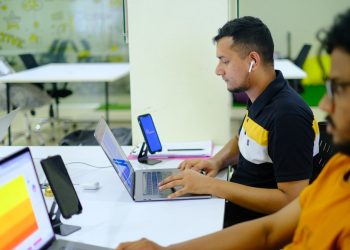No products in the cart.
Embracing AI in Education: A Path to Responsible Integration
Explore how schools can responsibly integrate AI tools in education, balancing technology with human learning for future generations.
City, Country — As the digital landscape continues to evolve, the education sector stands at a pivotal crossroads. The advent of artificial intelligence (AI) tools has the potential to revolutionize classrooms, offering personalized learning experiences and administrative efficiencies. However, the integration of such technology must be approached with caution and responsibility. UNESCO has outlined comprehensive guidelines for AI in education, but how can schools implement these recommendations effectively?
The challenge lies not only in adopting new technologies but in doing so ethically. Schools are charged with the dual responsibility of preparing students for a future where AI will be ubiquitous while also ensuring that this technology enhances, rather than detracts from, human learning. This delicate balance is essential for creating a generation of learners who are not just tech-savvy but also morally grounded.

UNESCO’s guidelines emphasize the importance of ethical considerations in AI deployment within educational settings. They advocate for transparency, accountability, and inclusivity, urging educators to remain vigilant about the biases that can seep into AI algorithms. For instance, a study conducted by the Stanford Graduate School of Education found that AI systems used in classrooms often perpetuate existing inequalities, inadvertently disadvantaging marginalized students. This highlights the need for educators to critically evaluate the tools they choose to implement.
Real-world case studies provide valuable insights into how schools can navigate these challenges. Take the example of a high school in Helsinki, Finland, that successfully integrated AI to personalize learning. Teachers collaborated with AI developers to create a system that adapts to each student’s learning pace, providing tailored resources while allowing educators to maintain control over the curriculum. This partnership not only enhanced student engagement but also ensured that the implementation adhered to ethical standards.
Take the example of a high school in Helsinki, Finland, that successfully integrated AI to personalize learning.
Another noteworthy example comes from a primary school in Toronto, Canada, where educators utilized AI-driven analytics to identify students who required additional support. By analyzing performance data, teachers were able to intervene early and provide necessary resources, helping students overcome academic hurdles. This proactive approach demonstrates how AI can be a powerful ally, rather than a replacement for human intuition and care.
Yet, the integration of AI is not without its critics. Skeptics argue that reliance on technology can diminish the role of the teacher, reducing the human element that is so vital to education. They caution against viewing AI as a panacea for all educational challenges. Instead, they advocate for a model where technology complements rather than replaces traditional teaching methods. This perspective resonates with many educators who fear that excessive reliance on AI could lead to a depersonalized learning environment.
The question then arises: how can schools strike this balance? One practical approach is to involve students, parents, and the wider community in discussions about AI integration. By fostering an inclusive dialogue, schools can better understand the concerns and expectations of all stakeholders, ensuring that the technology serves their needs.
Furthermore, training teachers to effectively use AI tools is paramount. Professional development initiatives should focus on equipping educators with the skills needed to navigate this new landscape. Workshops that emphasize ethical considerations, data literacy, and the role of AI in fostering creativity can empower teachers to harness technology responsibly.
Looking ahead, the role of AI in education is likely to expand. As technology continues to advance, schools must remain agile and responsive to changes. This means continuously evaluating the impact of AI tools on student learning outcomes and being willing to adapt based on feedback and results.
Professional development initiatives should focus on equipping educators with the skills needed to navigate this new landscape.
Ultimately, the goal is not merely to adopt AI for the sake of novelty but to enhance the educational experience in meaningful ways. The future of education depends on our ability to integrate these tools responsibly, creating a learning environment that values both technological innovation and the irreplaceable human touch.











